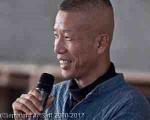Cai Guo-Qiang
Cai Guo-Qiang
Place: Quanzhou
Born: 1957
Biography:
Cai Guo-Qiang is a Chinese artist who currently lives and works in New York City and New Jersey.
Cai Guo-Qiang was born in 1957 in Quanzhou, Fujian Province, China. His father, Cai Ruiqin, was a calligrapher and traditional painter who worked in a bookstore. As a result, Cai Guo-Qiang was exposed early on to Western literature as well as traditional Chinese art forms.
As an adolescent and teenager, Cai witnessed the social effects of the Cultural Revolution first-hand, personally participating in demonstrations and parades himself. He grew up in a setting where explosions were common, whether they were the result of cannon blasts or celebratory fireworks. He also “saw gunpowder used in both good ways and bad, in destruction and reconstruction”. It seems that Cai has channeled his experiences and memories through his numerous gunpowder drawings and explosion events.
In his late teens and early twenties, Cai Guo-Qiang acted in two martial art films, The Spring and Fall of a Small Town and Real Kung Fu of Shaolin. Later intrigued by the modernity of Western art forms such as oil painting, he studied stage design at the Shanghai Theater Academy from 1981 to 1985. The experience allowed him a more comprehensive understanding of stage practices and a much-heightened sense for theater, spatial arrangements, interactivity, and teamwork.
Cai Guo-Qiang's practice draws on a variety of symbols, narratives, traditions and materials. These include fengshui, Chinese medicine, shanshui paintings, science, flora and fauna, portraiture, and fireworks. Much of his work draws on Maoist/Socialist concepts for content, especially his gunpowder drawings, which strongly reflect Mao Zedong's tenet "destroy nothing, create nothing." Cai has said: “In some sense, Mao Zedong influenced all artists from our generation with his utopian romance and sentiment." Cai was among the first artists to contribute to discussions of Chinese art as a viable intellectual narrative with its own historical context and theoretical framework.
Cai's work is mainly inspired by traditional Chinese culture. It also draws from political topics. As a student, Cai made works consisting of stick-figure or abstract patterns in oil and burnt gunpowder. This giving him a place in the experimental ferment preceding the '85 New Wave. However, Cai moved to Japan in 1986 as the movement was building.
In 1990, Cai began Projects for Extraterrestrials, which consisted of using large fireworks and extensive trails of blazing gunpowder that span across landscapes and building surfaces. Site-specific, the projects were implemented in various locations throughout the world. Project to Extend the Great Wall of China by 10,000 Meters: Project for Extraterrestrials No. 10 (1993) was representative of the nature of the projects as a whole, as it involved an approximately six-mile-long gunpowder fuse that extended beyond the western end of the Great Wall at the edge of the Gobi Desert. The fuse burned for about 15 minutes after it was lit, creating a dragon-like pattern across the dunes that was indicative of China's imperial and mythological heritage. The title for the series refers to Cai's inspiration for the project: the belief in a need for a new, higher perspective in which celebrations of pure energy replace earthly conflicts, and gunpowder, the "material fuel" of such conflict, becomes a system that delivers beauty and joy.
Cai initially began working with gunpowder drawings and ephemeral sculptures to foster spontaneity and confront the suppressive, controlled artistic tradition and social climate in China. While living in Japan from 1986 to 1995, Cai explored the properties of gunpowder in his drawings, an inquiry that eventually led to his experimentation with explosives on a massive scale and the development of his signature "explosion events". In 1995, he moved to New York with a grant from the New York-based Asian Cultural Council, an international organization that promotes artistic exchanges between Asian countries and the United States.
In 2004, Cai Guo-Qiang installed Inopportune: Stage One and Inopportune: Stage Two at the Massachusetts Museum of Contemporary Art (MASS MoCA). The piece was duplicated in 2008 at the Guggenheim Museum in New York. MASS MoCA describes the installation as such:
Nine cars arced through the 300 foot long gallery, tumbling and suspended in mid-air as if by stop-action. Long transparent rods radiated from the car, pulsing with dazzling multicolored light. An explosive moment, expanded in time and space as if in a dream, the cars formed the centerpiece of Inopportune by Cai Guo Qiang.
An adjacent gallery opened for the installation housed Inopportune: Stage 2, in which nine realistic tigers also hovered in the air, each one pierced by hundreds of arrows. The imagery in this gallery referred to the famous 13th-century Chinese story epitomizing bravery, in which a man named Wu Song rescued a village by slaying a man-eating tiger. In yet a third space, a phantom car bristling with fireworks floated like a ghost through the glittering illusion of Times Square at night.
More...
Wikipedia link: Click Here










